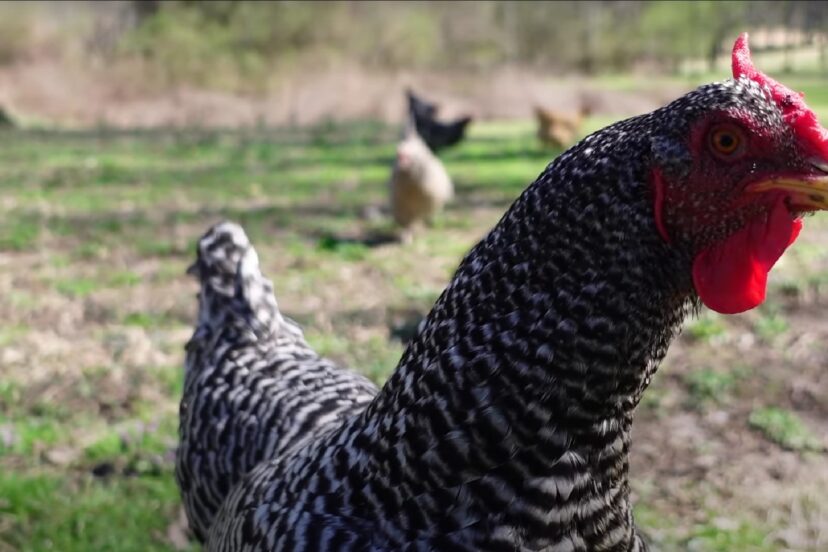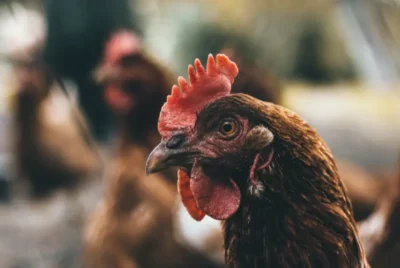Dominique Chicken Breed Guide: History, Care, and Characteristics
Starting your journey with raising chickens can be exciting, but choosing the best and perfect fit breed can be confusing. The Dominique chicken, with its unique look and history, is an interesting choice but might leave you wondering how to take care of them properly. Are they the right fit for your backyard? How do they behave, and what do they need to thrive?
This guide aims to simplify everything about the Dominique chicken breed for you, covering their history, how to care for them, and what makes them special so you can decide if they’re the perfect addition to your flock.
Breed Origin of Dominique Chickens
The Dominique chicken is the oldest chicken breed in America, coming from chickens that European settlers brought over.
Over time, these chickens were mixed with other breeds to make them stronger and better suited for life in America. They are known for their unique black-and-white feather pattern and are good for laying eggs and providing meat.
This breed was very popular on American farms in the past because they could find their food and were very tough.
Everything You Need to Know About Dominique Chickens

Physical Appearance
Dominique chickens have a distinctive grey and white barred feather pattern, giving them a speckled appearance. They feature a rose comb, which is low and close to the head, helping them resist frostbite. These medium-sized birds have tight feathers that keep them warm in cold weather. Roosters weigh about 7 pounds, and hens are slightly lighter, around 5 pounds.
Egg Production and Broodiness
Dominique hens have good egg-laying capabilities, producing around 230 to 275 medium-sized brown eggs annually. They are also noted for their broodiness, often showing a strong desire to sit on and hatch their eggs. This trait makes them excellent mothers, capable of raising multiple batches of chicks per year if allowed.
Meat Production
While Dominique chickens are primarily raised for egg production, they are also dual-purpose birds, meaning you can raise them for meat. Their medium size and good feed conversion rate make them viable for small-scale meat production, especially in backyard or homestead settings.
Adaptability
One of the Dominique chicken’s most significant advantages is its adaptability. They are hardy birds that can thrive in various climates, thanks to their dense feathering and rose comb. Their foraging skills are excellent, making them an asset for pest control and reducing feed costs.
Temperament
Dominique chickens are calm and have a friendly temperament, making them suitable for families and pets. They tend to get along well with other chickens and adapt quickly to their environment, whether it’s a free-range setting or a more confined space.
Characteristics
Some distinctive characteristics of Dominique chickens include their longevity and resilience. They live longer and have fewer health problems than other breeds, making them a valuable addition to any flock.
Read also: An In-depth Look at the Rhode Island Blue Chicken Breed
Breed Status of Dominique Chickens
Dominique chickens were classified as “Watch” by The Livestock Conservancy. This status indicates that while they are not critically endangered, their population numbers are still relatively low and require monitoring to ensure their preservation.
The “Watch” category typically includes breeds with less than 2,500 annual registrations in the US and an approximate global population of less than 10,000.
How Can You Determine Dominique Chicken to Barred Rocks

Distinguishing between Dominique chickens and Barred Plymouth Rock chickens can be tricky at first because both breeds share the characteristic barred feather pattern. However, there are some key differences that can help you tell them apart:
- Comb Type: The most reliable way to distinguish between the two breeds is by looking at the comb. Dominiques have a rose comb, which is flat, close to the head, and has a rounded top. On the other hand, Barred Plymouth Rocks have a single comb, which stands upright and has distinct points.
- Feather Pattern: While both breeds have barred patterns, the bars on a Dominique chicken’s feathers tend to be slightly narrower and more irregular compared to the more defined and evenly spaced bars on a Barred Plymouth Rock.
- Body Size and Shape: Barred Plymouth Rocks are generally larger and have a broader body shape than Dominiques. Dominiques are somewhat smaller and have slightly more slender builds.
- Tail Angle: Dominique chickens tend to have a tail angled more towards the body, giving them a somewhat more compact appearance, whereas Barred Plymouth Rocks have tails held at a higher angle.
- Feather Texture: Some enthusiasts note that Dominiques often have a softer feather texture compared to the slightly coarser feathers of the Barred Plymouth Rocks.
These differences might not be immediately obvious without a side-by-side comparison, especially for those unfamiliar with chicken breeds.
However, the comb type is the most straightforward and reliable method for differentiation if you’re only looking at one bird and trying to determine its breed.
Final Words: Is It Right For You?
The Dominique chicken is a great choice for anyone interested in raising chickens. Known for its distinctive look, friendly nature, and hardiness, this breed is perfect for both beginners and seasoned chicken keepers. Raising Dominiques offers fresh eggs and meat and connects you to a piece of American history.
If you want to learn more about raising chickens or expanding your knowledge, check out our site. Whether you’re a newbie or looking to improve your skills, we have all the tips and information you need to succeed in your chicken-raising adventures.




